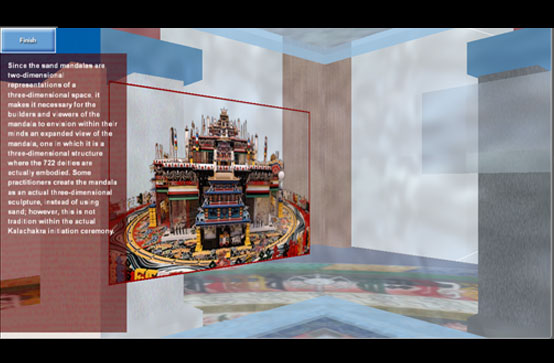|
 |
|
Conclusion
Design Document Excerpt
There are multiple conclusions that can be derived from developing this project which support the use of virtual environments as teaching tools for Religion and Cultural Studies at a college level. Additionally, outside of academic learning environments, individuals interested in participating in the real Kalachakra initiation can learn more about it before taking real-world action. In using 3DRTVEs developed for these purposes, these students can view and participate in new or foreign rituals in a related contextual environment, adding to the depth of meaning behind the simulations. By providing multiple avenues of information presentation and virtual action, VEs have the potential to engage students through constructivist learning. Students can interact and experience places and rituals virtually without actually having to do so; in participating in these simulations, there is less personal risk and no need for actual travel. If designed correctly, virtual rituals have the added benefit of providing a meditative experience for receptive individuals. By utilizing visual, textual, spatial, and auditory modes of information presentation as well as the interactive capabilities of 3D real-time virtual environments, expressive and effective teaching tools can be developed that familiarize students with the subject of ritual performance.
Thanks to my committee members, husband, family, and friends for their support and patience during this process!
|
|